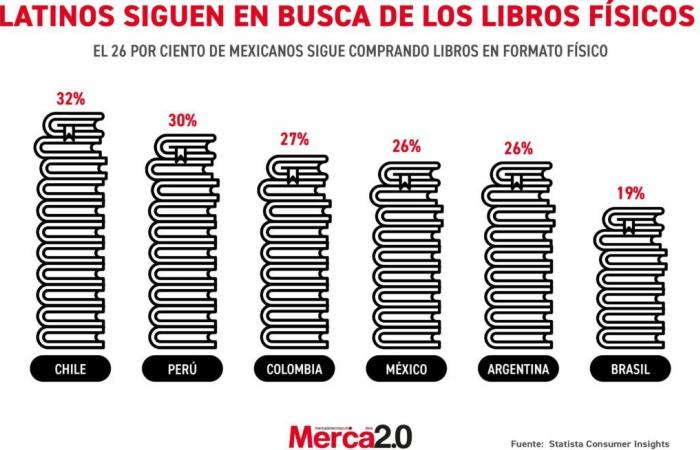On April 25, International Book Day was held, a date that aims to promote reading, support the editorial industry and protect copyright. Although digital formats gain ground in many aspects of everyday life, physical books continue to be the favorite choice of an important part of readers in Latin America.
This is demonstrated by a recent Statista Consumer Insights survey, where it is revealed that the habit of buying printed books is still present in several countries in the region. Chile leads the list with 32% of people who bought at least one physical book in the last twelve months, followed by Peru with 30%. Colombia (27%), Mexico (26%) and Argentina (also with 26%) show a similar interest, while Brazil, although with a lower percentage (19%), maintains a solid base of traditional readers.
These figures show that, despite the rise of electronic devices and digital reading platforms, many readers continue to assess the sensory and emotional experience offered by a printed book. Having it in the hands, leafing through its pages, underline or even collect them, are practices that continue to generate connection with the content.
In addition, in areas where internet access or technology is limited, physical format is maintained as an accessible and direct route to approach reading. Book Fairscommunity libraries and school campaigns continue to promote paper circulation as a key educational tool.
Opting for a printed book also represents, for many, a moment of conscious disconnection. Faced with the accelerated rhythm of digital life, reading on paper becomes a way of concentrating, reducing distractions and completely diving into a story.
Reading in physical format has not lost its value or place. In Latin Americathere are still millions of people who bet on books printed not only as a source of knowledge, but as a cultural object loaded with meaning.






